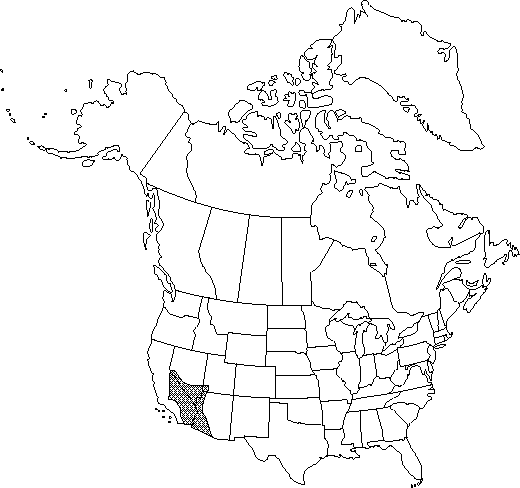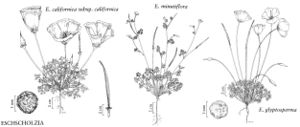Eschscholzia minutiflora
Proc. Amer. Acad. Arts 11: 122. 1876.
Plants annual, caulescent, erect or spreading, 5-35 cm. Leaves basal and cauline; blade grayish or bluish green, glabrous, glaucous; ultimate lobes usually obtuse, terminal broadened at apex. Inflorescences cymose or 1-flowered; buds nodding. Flowers: receptacle obconic, cup without spreading free rim; calyx acuminate, glabrous, sometimes glaucous; petals yellow, sometimes with orange spot at base, 3-26 mm. Capsules 3-6 cm. Seeds brown to black, ellipsoid, 1-1.4 mm, reticulate. 2n = 12, 24, 36.
Phenology: Flowering late winter–spring (Mar–May).
Habitat: Desert washes, flats, and slopes
Elevation: 0-2000 m
Distribution

Ariz., Calif., Nev., Utah, nw Mexico
Discussion
Eschscholzia minutiflora is highly variable in flower size. Typically, plants are hexaploid (2n = 36) with petals 3-10 mm. Tetraploid plants (2n = 24) with petals 6-18 mm, from the northern and central Mojave Desert of California, have been distinguished as subsp. covillei. Diploid plants (2n = 12) with petals 10-26 mm, restricted to the El Paso and Rand mountains of the western Mojave Desert, have been distinguished as E. minutiflora subsp. twisselmannii and are considered to be of conservation concern; previously they were misattributed to E. parishii.
Selected References
None.
Lower Taxa
"broadened" is not a number.
